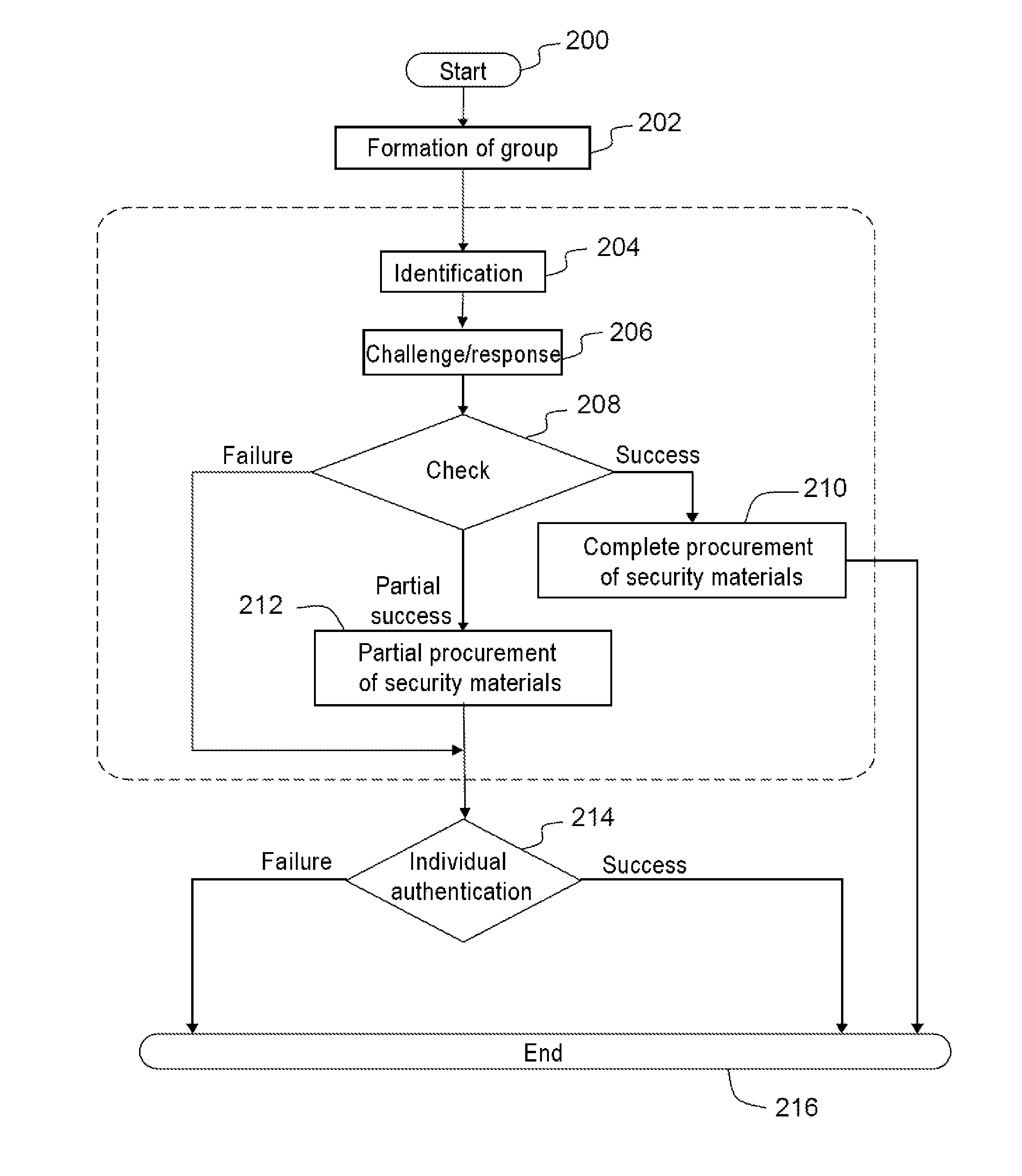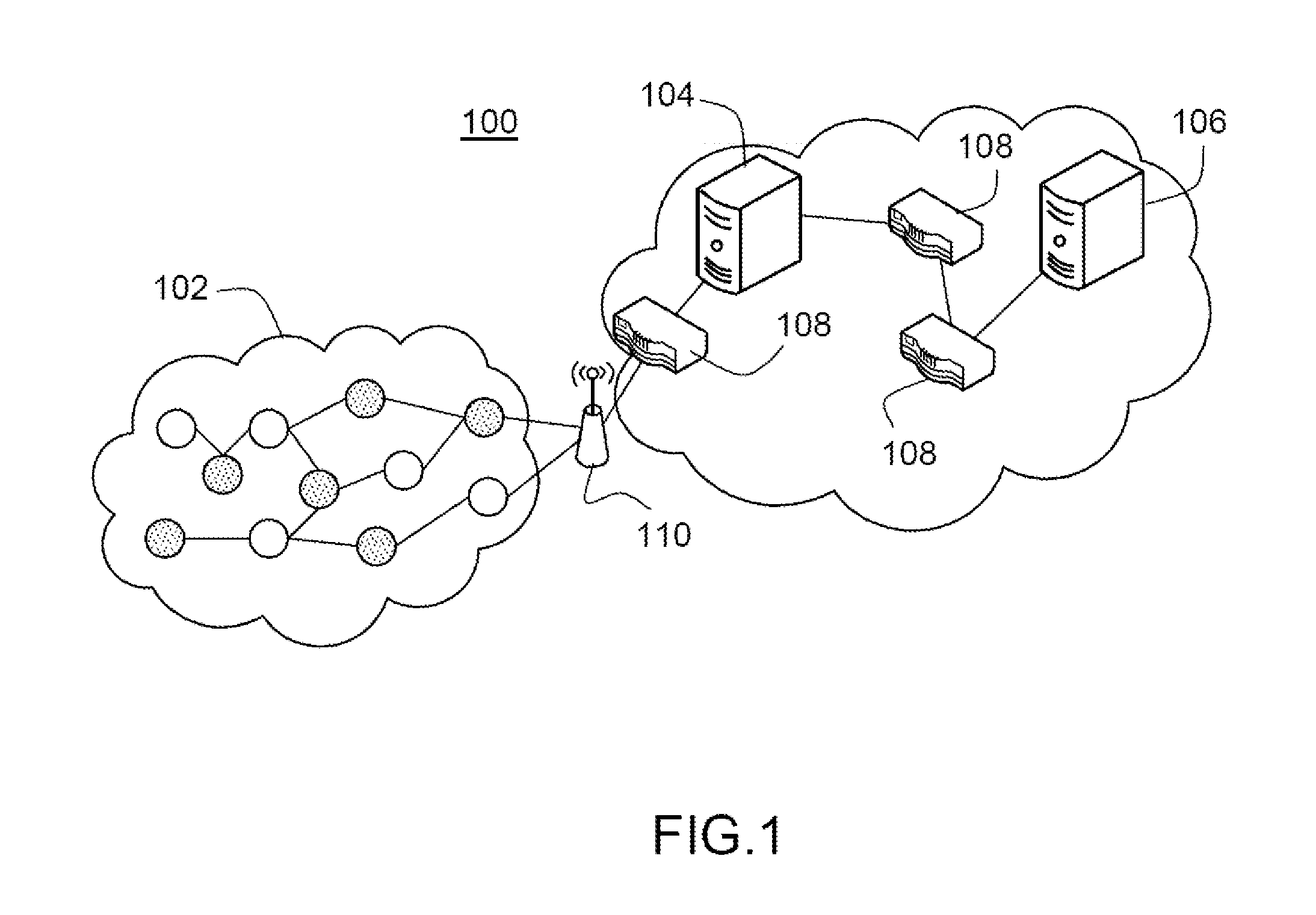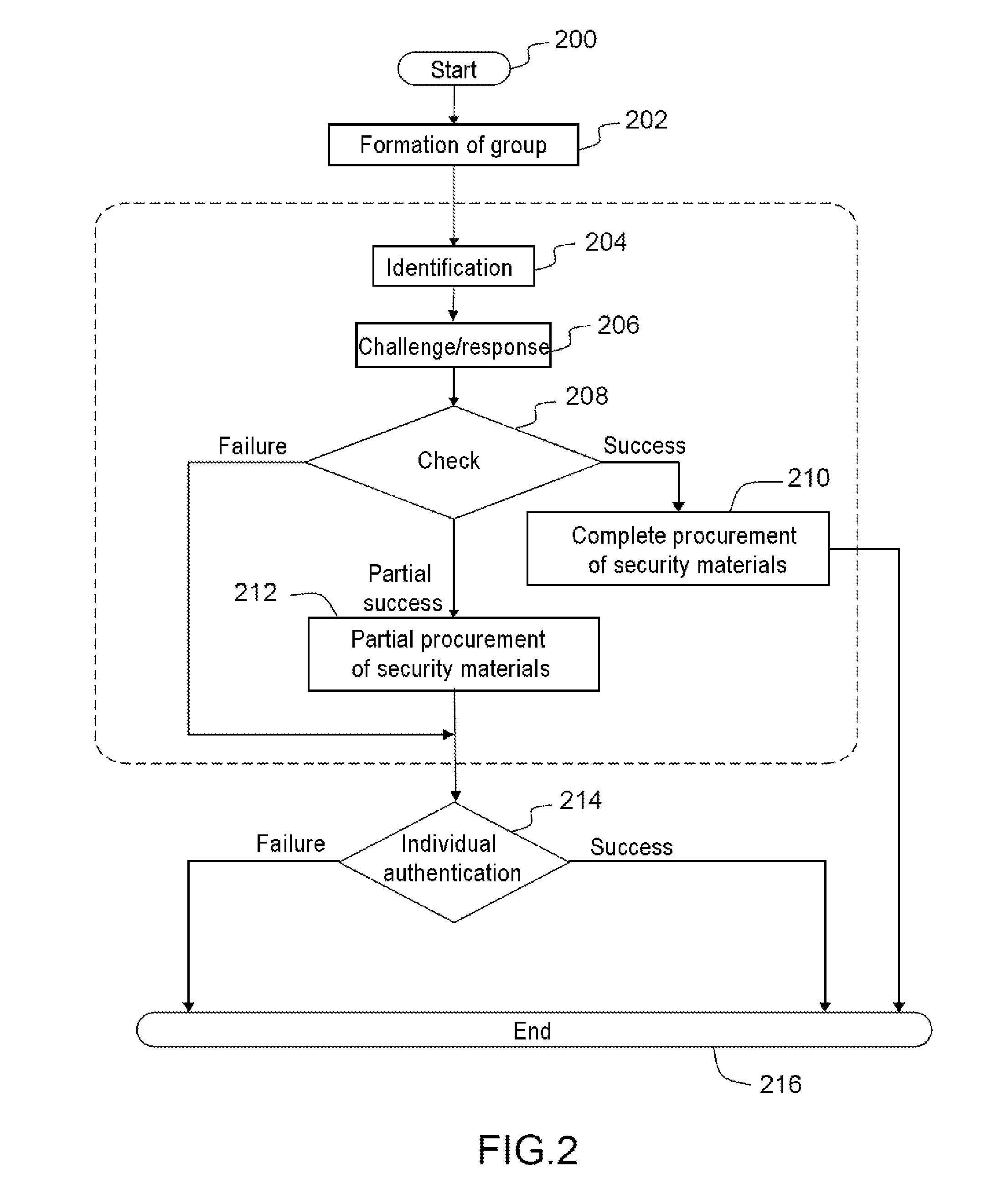Method and system for authenticating the nodes of a network
a network and node authentication technology, applied in the field of communication network security, can solve the problems of reducing the number of messages exchanged in the mtc network, consuming significant resources such as communication energy costs or bandwidth, and not being able to reduce the number of messages exchanged by the network. , to achieve the effect of less consumption of resources and less energy consumption
- Summary
- Abstract
- Description
- Claims
- Application Information
AI Technical Summary
Benefits of technology
Problems solved by technology
Method used
Image
Examples
Embodiment Construction
[0037]The invention applies advantageously to a network formed from nodes having low resources, and in which certain nodes have to access a resource or a service associated with a remote infrastructure. Examples of low-resource networks are the networks of sensors which are increasingly deployed in the industrial field and vehicle networks.
[0038]FIG. 1 shows an example of a general context 100 in which to advantageously implement the invention. A group of nodes (102) made of equipment with low resources has to access services or resources associated with a service provider (104) of a remote infrastructure. The services or the resources required can be connectivity or data requirements. The nodes can be mobile or static and are connected to the remote network through a gateway (110). The service-providing server can, in a variant implementation, be co-located on the gateway, as for example in the case of a network access.
[0039]In order to have access to these services or resources, t...
PUM
 Login to View More
Login to View More Abstract
Description
Claims
Application Information
 Login to View More
Login to View More - R&D
- Intellectual Property
- Life Sciences
- Materials
- Tech Scout
- Unparalleled Data Quality
- Higher Quality Content
- 60% Fewer Hallucinations
Browse by: Latest US Patents, China's latest patents, Technical Efficacy Thesaurus, Application Domain, Technology Topic, Popular Technical Reports.
© 2025 PatSnap. All rights reserved.Legal|Privacy policy|Modern Slavery Act Transparency Statement|Sitemap|About US| Contact US: help@patsnap.com



